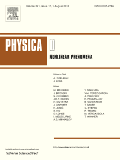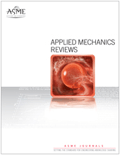
Journal of the Royal Society Interface
Scope & Guideline
Connecting Ideas, Catalyzing Change
Introduction
Aims and Scopes
- Interdisciplinary Research:
The journal emphasizes research that integrates biology with physics, mathematics, and engineering, promoting a holistic understanding of complex biological systems. - Computational and Mathematical Modeling:
A core focus is on the development and application of computational models to simulate biological processes, including disease dynamics, ecological interactions, and cellular behaviors. - Mechanobiology and Biomechanics:
Research often explores the mechanical aspects of biological systems, including how mechanical forces influence cellular processes and tissue engineering. - Collective Behavior and Social Dynamics:
The journal publishes studies on collective behavior in biological systems, including animal groups, social insects, and human interactions, often using network science and game theory. - Novel Experimental Techniques:
There is a consistent focus on the development and application of innovative experimental techniques to study biological phenomena, particularly at the cellular and molecular levels. - Environmental and Health Applications:
Research relevant to public health, environmental sustainability, and the modeling of infectious diseases is a significant area of interest, particularly in the context of global health challenges.
Trending and Emerging
- Epidemiological Modeling:
There is a significant increase in publications related to epidemiological modeling, particularly in light of the COVID-19 pandemic, emphasizing the importance of understanding disease dynamics in populations. - Machine Learning and Data Science:
Emerging applications of machine learning and artificial intelligence in biological and ecological modeling are on the rise, showcasing the potential of these technologies to analyze complex biological data. - Bio-inspired Engineering:
Research that draws inspiration from biological systems to develop new technologies, particularly in robotics and materials science, is gaining traction. - Climate Change and Environmental Impact Studies:
There is a growing emphasis on studies that explore the impacts of climate change on biological systems, including ecological dynamics and health-related issues. - Collective Behavior and Decision Making:
Increasing interest in the collective behavior of organisms and how individual actions contribute to group dynamics reflects a trend towards understanding social and ecological interactions. - Synthetic Biology and Genetic Engineering:
Research in synthetic biology, particularly the development of engineered biological systems and their applications, is becoming more prominent in the journal's publications.
Declining or Waning
- Traditional Biological Studies:
There is a noticeable decline in purely descriptive biological studies, with a shift towards more quantitative and model-driven approaches. - Basic Biological Mechanisms:
Research focusing solely on basic biological mechanisms without a computational or engineering perspective seems to be less prevalent, as the journal favors interdisciplinary integration. - Descriptive Ecology:
Ecological studies that do not incorporate mathematical modeling or computational analysis are becoming less common, reflecting a preference for more analytical approaches. - Reductionist Approaches:
There appears to be a waning interest in reductionist studies that isolate single variables in biological research, as the journal increasingly values systems-level investigations. - Classical Experimental Methods:
The relevance of classical laboratory techniques, without the integration of computational modeling or interdisciplinary elements, is diminishing in favor of more innovative methodologies.
Similar Journals

Complex Systems
Fostering Insights into the Dynamics of Complex SystemsComplex Systems is a pivotal journal published by Complex Systems Publications Inc, specializing in the interdisciplinary field of complex systems science. With an ISSN of 0891-2513, it focuses on advancing the understanding of complex phenomena across various domains, including computer science and control engineering. Operating from the United States, this journal has established itself as a credible source with a current impact factor reflecting its relevance—ranking in the Q3 category for both Computer Science (miscellaneous) and Control and Systems Engineering as of 2023. Although it does not offer Open Access, Complex Systems aims to facilitate the exchange of cutting-edge research and innovative methodologies, making it indispensable for researchers, professionals, and students eager to explore and contribute to the field. With coverage spanning from 2012 to 2024, it strives to foster a deeper understanding of the principles governing complex systems, thus paving the way for future technological advancements and theoretical developments.

JOURNAL OF MATHEMATICAL BIOLOGY
Where Mathematical Rigor Meets Biological Complexity.Journal of Mathematical Biology, published by Springer Heidelberg, is a leading international journal dedicated to the interdisciplinary field of mathematical modeling and its applications in biology. With an ISSN of 0303-6812 and an E-ISSN of 1432-1416, this journal has established its prominence within the academic community, reflected in its impressive rankings: Q1 in Agricultural and Biological Sciences (miscellaneous) and Q2 in both Applied Mathematics and Modeling and Simulation as of 2023. Covering a broad scope from ecological modeling to biomathematics, the journal serves as a crucial platform for researchers, professionals, and students alike to disseminate innovative work that bridges the gap between theoretical mathematics and biological phenomena. The journal, which spans from its inception in 1974 to 2024, emphasizes rigorous research while ensuring a high level of scholarly communication through its selective review process. With its solid reputation, the Journal of Mathematical Biology continues to significantly contribute to advancements in mathematical sciences and their essential role in understanding complex biological systems.

PHYSICAL BIOLOGY
Advancing Knowledge in Biophysics and BeyondPHYSICAL BIOLOGY is a prominent journal published by IOP Publishing Ltd, focusing on the interdisciplinary field of biophysics, cell biology, molecular biology, and structural biology. Established in 2004, this journal has quickly made its mark in the academic community, currently ranking in the Q2 category in Biophysics and Q3 in Cell, Molecular, and Structural Biology as of 2023. With an ISSN of 1478-3967 and E-ISSN 1478-3975, it serves as a vital platform for disseminating groundbreaking research that bridges physical principles with biological systems. While currently not providing Open Access options, the journal offers access to a wealth of knowledge crucial for researchers, professionals, and students alike who are eager to explore the intricacies of living organisms through a physical lens. Situated in the United Kingdom, PHYSICAL BIOLOGY emphasizes the importance of multiscale approaches and innovative techniques, making it an essential resource for those working at the intersection of physics and biology.

Biomechanics and Modeling in Mechanobiology
Bridging Engineering and Biology for Groundbreaking DiscoveriesBiomechanics and Modeling in Mechanobiology is a prestigious academic journal published by SPRINGER HEIDELBERG, dedicated to advancing the field of mechanobiology through innovative research and modeling techniques. With an ISSN of 1617-7959 and a remarkable E-ISSN of 1617-7940, this journal serves as a vital platform for disseminating groundbreaking findings that bridge the gap between biomechanics and biological systems. Designed for a global audience, the journal emphasizes the application of mechanical engineering principles in understanding complex biological processes, offering invaluable insights to researchers, professionals, and students alike. It ranks impressively in Scopus, landing in the top quartiles (Q1 and Q2) across categories such as Mechanical Engineering and Biotechnology, highlighting its significant impact and relevance within the scientific community. The journal is accessible both physically and digitally, making it a key resource for those seeking to explore the intricate interplay between mechanics and biology. By fostering interdisciplinary collaboration, Biomechanics and Modeling in Mechanobiology plays a crucial role in pushing the boundaries of knowledge in the rapidly evolving biosciences landscape, thus contributing to the development of cutting-edge applications in healthcare and engineering.

npj Systems Biology and Applications
Unveiling New Dimensions in Biological Systemsnpj Systems Biology and Applications, published by NATURE PORTFOLIO, is a premier open-access journal that has been at the forefront of the field since its inception in 2015. With a commendable focus on the interdisciplinary integration of applied mathematics, biochemistry, computer science, and drug discovery, the journal currently enjoys a Q1 ranking across multiple categories, showcasing its significant impact within the scientific community. In 2023, it ranked 70 out of 635 in Applied Mathematics and holds a notable place in the 89th percentile, confirming its esteemed reputation among researchers. Situated in the United Kingdom, this journal not only promotes innovative research in systems biology but also serves as an essential platform for the dissemination of high-quality studies that delve into modeling, simulation, and the application of biological systems in drug discovery processes. With an open-access model, authors can reach a broad audience, enhancing collaborations and advancing knowledge across disciplines, making it an indispensable resource for researchers, professionals, and students alike seeking to contribute to the evolving landscape of systems biology.

Current Opinion in Systems Biology
Catalyzing innovation in the study of complex biological interactions.Current Opinion in Systems Biology is an esteemed academic journal published by ELSEVIER, focusing on the dynamic and interdisciplinary field of systems biology. Since its inception in 2017, the journal has made significant strides in disseminating cutting-edge research and innovative perspectives across various domains, including applied mathematics, biochemistry, and drug discovery. With an impressive impact factor reflecting its prominent position as a Q1 journal in multiple categories—including Applied Mathematics, Biochemistry, and Computer Science Applications—it serves as a vital resource for researchers, professionals, and students alike. The journal embraces a comprehensive approach to understanding complex biological systems, fostering a deeper insight into the interactions within biological and computational frameworks. This makes it an essential conduit for advancing knowledge and innovation in systems biology, facilitating the development of new methodologies that could lead to groundbreaking discoveries.

PHYSICA D-NONLINEAR PHENOMENA
Unraveling Complexities in Physics and MathematicsPHYSICA D-NONLINEAR PHENOMENA, published by Elsevier, serves as a leading academic journal at the forefront of the fields of Applied Mathematics, Condensed Matter Physics, Mathematical Physics, and Statistical and Nonlinear Physics. With an impressive track record since its inception in 1980, this journal has maintained a distinguished presence, noted for its Q1 ranking in multiple categories in 2023, showcasing its impact and relevance in the scientific community. The journal's commitment to advancing knowledge is reflected not only in its rigorous peer-reviewed articles but also through its high visibility and accessibility, aiding researchers, professionals, and students in staying abreast of the latest developments in nonlinear phenomena. Located in Amsterdam, Netherlands, PHYSICA D-NONLINEAR PHENOMENA is essential for those seeking to explore innovative research and contribute to groundbreaking discoveries in the realm of nonlinear dynamics.

Journal of Cellular Automata
Advancing Knowledge in Complex SystemsWelcome to the Journal of Cellular Automata, an esteemed publication dedicated to advancing the understanding and application of cellular automata in various contexts. Published by OLD CITY PUBLISHING INC in the United States, this journal serves as a pivotal platform for researchers, professionals, and students in the fields of Computer Science and Control and Systems Engineering. Since its inception in 2008, the journal has provided a unique avenue for disseminating original research, reviews, and case studies that drive innovation in these interdisciplinary areas. Although it currently holds a Q4 ranking in Scopus for both Computer Science and Control and Systems Engineering categories, the journal aims to enhance its impact through rigorous peer review and the promotion of groundbreaking ideas. While access options do not include an open-access model, contributors and investigators can look forward to a vibrant exchange of knowledge dedicated to exploring the complexities and applications of cellular automata in various systems. Join us in our journey as we delve into the intricacies of this fascinating domain, contributing to the collective understanding and technological advancement within the scientific community.

Applied Mechanics Reviews
Advancing the Frontiers of Mechanical Engineering.Applied Mechanics Reviews, a prestigious journal published by ASME (American Society of Mechanical Engineers), is an essential resource in the field of mechanical engineering. With an impact factor reflecting its high relevance and rigorous peer-review process, this journal holds a commendable Q1 ranking in the 2023 category quartiles and is positioned at an impressive rank of #7 out of 672 in Scopus rankings, placing it in the 99th percentile. The journal, with an ISSN of 0003-6900 and E-ISSN of 2379-0407, serves as a vital platform for the dissemination of groundbreaking research, offering a comprehensive overview of applied mechanics, spanning theoretical developments to practical applications. Although it does not provide open access options, the insights published within these pages are invaluable for researchers, professionals, and students eager to enhance their knowledge and stay abreast of the latest advancements. With volumes dating back to 1965 and continuing through 2024, Applied Mechanics Reviews remains a cornerstone of the mechanical engineering community, fostering innovation and collaboration across various domains of engineering.

Ecological Complexity
Innovating ecological modeling for a sustainable future.Ecological Complexity is a prestigious academic journal published by Elsevier, dedicated to advancing the understanding of complex ecological systems through innovative modeling and analysis. With an ISSN of 1476-945X and an E-ISSN of 1476-9840, this journal has been a critical platform for researchers since its inception in 2004, with a forecasted operation until 2024. The journal enjoys an esteemed Q2 ranking in both the Ecological Modeling and Ecology, Evolution, Behavior and Systematics categories as of 2023, highlighting its significant impact and relevance in the field. Additionally, it ranks impressively in Scopus, with 85th out of 721 in the Ecology category and 11th out of 41 in Ecological Modeling, illustrating its commitment to high-quality research dissemination. While it does not currently offer Open Access options, Ecological Complexity remains a vital resource for ecologists, environmental scientists, and interdisciplinary researchers aiming to deepen their understanding of ecological interactions and systems. The journal is based in the Netherlands at RADARWEG 29, 1043 NX, AMSTERDAM, and serves as an essential forum for fostering innovative research that bridges theoretical concepts and practical applications in ecology.